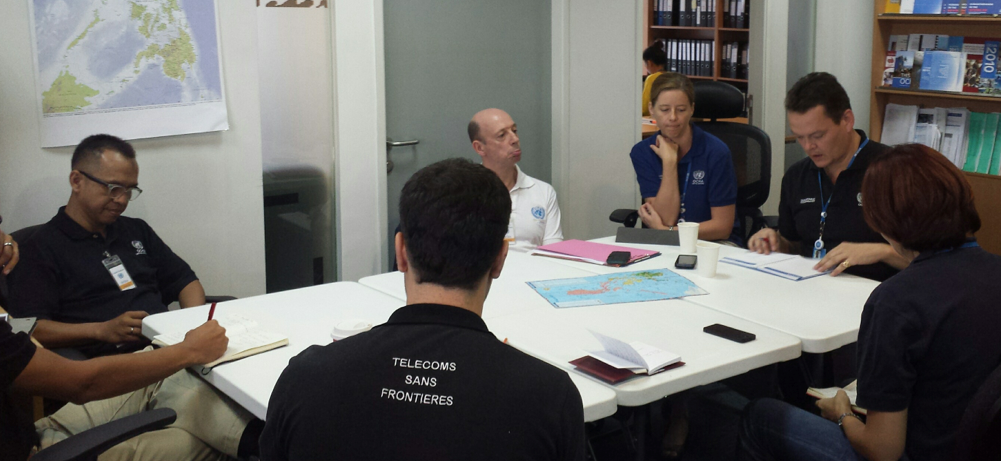[SatNews] Preparing in advance is a luxury for this NGO which shows up in the midst of war zones, fires, earthquakes and more.

TSF and United Nations in crisis centre coordination meeting in Manila
Following the forecast of Super Typhoon Hagupit, TSF (Télécoms Sans Frontièrs) deployed a pre-positioned team which arrived yesterday (Sunday 7th December) to the capital of the Philippines, Manila from its ROAP (Regional Office for Asia/Pacific) and Headquarters in Europe.
With windspeeds of upto 190km/h, Hagupit (locally known as Ruby) is moving slowly across the country over a period of several days, leaving floods and landslides in its trail and destroying hundreds of thousands of homes leaving families uprooted in the provinces of Samar and Masbate.
Since its arrival, TSF has been working directly with the United Nations Disaster Assessment and Coordination team (UNDAC) on sharing and gathering as much information as possible on the affected zones. TSF is ready to provide satellite communications support to the UNDAC assessment teams in their field evaluations, allowing for better coordination and information flow between field teams, UN regional offices and UN agencies. As the typhoon is still forging its way through the country, many islands and provinces remain inaccessible by land, sea and air. Alongside numerous iNGOs, TSF is working with the Humanitarian Country Team (HCT) for the Philippines to define the areas requiring humanitarian aid.
Local operator SMART is also in collaboration with TSF on identifying the telecommunications infrastructures hit the hardest by Hagupit.
Pending reports from the ground and accessibility, the TSF field team is on standby to deploy to the south-east of the island province of Masbate, where some 137,200 people (30,000 families) have been affected by the typhoon. TSF hopes to intervene directly and provide priority calls for the population.
One year after Typhoon Haiyan destroyed vast parts of the country, many areas are still in recovery. It is essential to bring telecoms aid to the people cut off in the weakest and most affected zones.